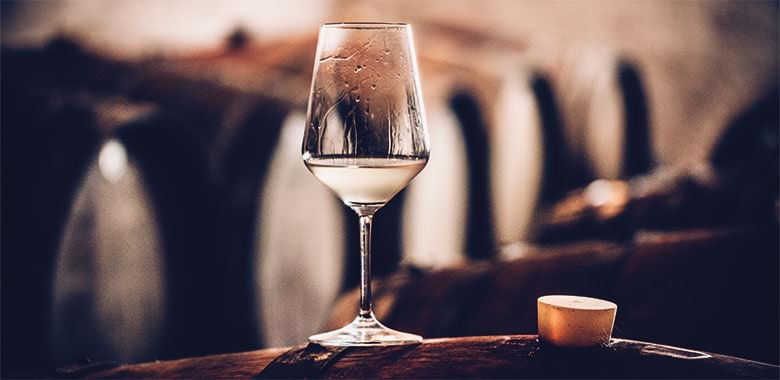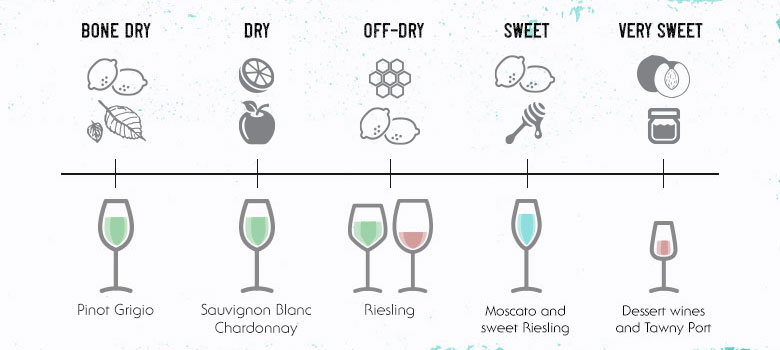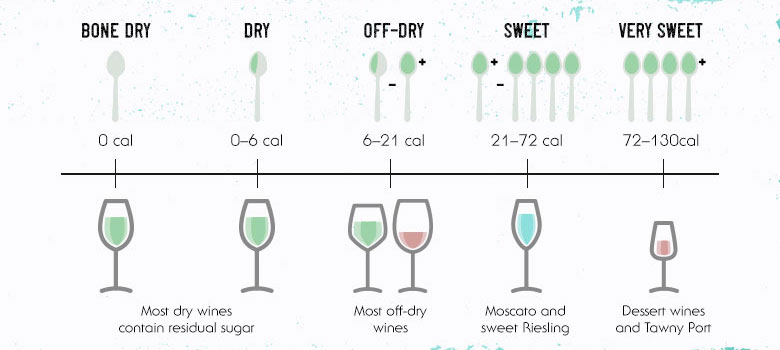
Wine
What is Sweet Wine?
What is sweet wine? While the answer is quite simple, but it’s also quite detailed.
Basically, a sweet wine is any wine that has retained a high level of residual sugar during the winemaking process, including Moscato, Lambrusco, Fortifieds and Dessert wines. As wine is made from grapes which contain natural sugars, the winemaking process and the winemaker’s choice of style will determine how much, if any, residual sugar a wine will contain, and therefore how sweet it is.
So, let’s take a look at what classifies a wine as a sweet wine, what makes a wine sweet, and what kinds of styles of sweet wines are made in Australia.
Wine sweetness chart

Where does the sugar in wine come from?
Residual sugars primarily emerge from fruit sugars in the wine grapes themselves: sucrose, fructose and glucose. These are vital ingredients in the process of alcoholic fermentation, and typically determine how sweet or dry the wine that reaches your table will be.
As wine is being made, yeast will consume these fruit sugars to produce the ethanol that gives wine its alcohol content. If all the sugars are consumed in the process, a dry wine is the result.
After fermentation has finished, the natural grape sugars left over in a wine are known as residual sugars, and are measured in grams per litre (g/L). They vary greatly across different types of wine. As a rule, the riper the grapes, the more sugar there is to metabolise – and the higher the potential alcohol content.
What's the difference between sweet wine, off-dry wines and dry wines?
These terms simply refer to how much residual sugar is in a wine. Dry wines have had all or almost all their sugar converted to alcohol during fermentation. Sweet wines typically retain high levels of their residual sugar – as much as 230g/L in some instances. Off-dry wines, however, have a mildly perceptible sweetness, with moderate levels of residual sugar from around 12g/L and up.
How much sugar is in sweet wine?

The level of sugar in your wine is determined by a number of factors, including:
- The type(s) of grape used
- The ripeness of the grape at harvesting
- The alcohol content of the wine
- The style/type of wine produced
Are sweet wines natural or artificially flavoured?
Naturally sweet wines occur when the yeast is prevented from consuming the sugar content, most often by chilling or filtering the fermentation, or when there is too much sugar for the yeast to consume.
At the bottom end of the market, wine producers may add sugar or grape concentrate in order to mask the lower quality ingredients present in their wines.
What types of sweet white wines are there?
We answer all your questions on which wines are sweet, and which are not!
ARE SPARKLING WINES SWEET?
For Sparkling wines, which are naturally dry, the dosage of residual sugar plays a crucial role in achieving balance. Sugar may also be added to encourage secondary or bottle fermentation to produce carbon dioxide – ordinarily released during regular fermentation -to create the ‘bubbly’ aspect so beloved of many wine drinkers.
Ultimately, whatever the wine, residual sugars are an essential by-product of their composition. As you might expect, it’s all a delicate balancing act of acidity and sweetness; many sweet wines can actually taste dry due to higher acidity, while a dry wine can taste sweet if it has a higher alcohol level.
Getting that balance right is the key to a great wine experience.

IS MOSCATO A SWEET WINE?
If you’re just beginning your wine journey and prefer sweeter style wines, then Moscato is a good starting point. A light and sweet wine, Moscato is typically made with lower alcohol (around 5-6%), whereas white wine is much higher with 12% alcohol. It’s commonly made in a lighter-bodied style with a fine frizzante bubble. You’ll also find Moscato used as a core ingredient in many cocktails.
It’s also a very colourful wine, from light straw through to dark pinks, even reds, and the older the vine used, the greater the richness and intensity of flavour. Expect notes of frangipani, white grape, nectarine, guava and lychee. It’s made as a drink-now wine, so cellaring is not required.
IS ROSÉ A SWEET WINE?
While, most winemakers have moved towards a dry-style Rosé, you can still find plenty of sweeter expressions. Rosé just goes from strength to strength, and many winemakers can now be found experimenting with different red varieties such as Grenache, Sangiovese and Pinot Noir. Its reputation has soared, thanks to its suitability for the Australian climate, and the fact it makes a great alternative to a chilled white or a lighter bodied red. Like most white wines, Rosés are best served chilled and enjoyed soon after release.

IS RIESLING A SWEET WINE?
While European Rieslings like those from Austria, Germany and some areas of France can tend to be on the sweeter side, most Australian Riesling is now made in a dry style. But that doesn’t mean there aren’t off-dry styles out there, plus Late Harvest and Botrytis Riesling are luscious dessert wines.
IS GEWÜRZTRAMINER A SWEET WINE?
Gewürztraminer can be made in just about any style from dry to sweet, and in Australia it’s mostly a medium-to-full bodied wine that is usually dry or off-dry, with just a touch of residual sugar.
With its beautifully aromatic nose of rose, lychee, honeysuckle, pineapple and guava, Gewürztraminer is often initially thought to be a sweet wine. It’s these aromas, low acidity and higher alcohol content that can make it appear less dry.

ARE THERE SWEET RED WINES?
While not as common as sweet whites, sweeter style reds can make a great wine to pick up for a lazy weekend drink as we come into warmer weather. Italian grape Lambrusco is often used to make a semi-sweet and lightly Sparkling red wine, likewise some Australian producers make a Dolcetto and Syrah blend that is very similar in style.
ARE FORTIFIED WINES SWEET WINES?
Fortified wine comes in a number of styles – there are red fortified wines and white fortified wines, ranging from dry to sweet in-style. One thing Fortified wines have in common is that they make sensational aperitif (dry-style) or digestif/after-dinner wines (for the sweeter varieties).

IS PORT OR TAWNY A SWEET WINE?
Full-bodied and luscious with rich flavours like hazelnut, raisins and dried fig, often with burnt butter and coffee notes, Australian Tawny is a style that has been aged in the barrel for some time before its release. As such, it’s intended to be enjoyed immediately, though you can keep it for some time – it just won’t develop further.
IS MUSCAT A SWEET WINE?
Sweet and luscious, Muscat is one of the richest and most powerful wines in the world, with classic aromas and flavours of dried fruits, espresso, tobacco leaf and chocolate.
Like Tawny, Australian Muscat is primarily the product of warmer regions, with the most famous for the style being Rutherglen. Again, like Tawny it is aged in barrel over an extended period, concentrating the power and richness of the wine. Meant for immediate drinking, they can be cellared, but doing so will not improve or develop them further.
IS TOPAQUE A SWEET WINE?
In terms of flavour, Topaque is often considered a lighter, finer wine than Muscat, with flavours of candied fruits, honey, toffee, and a distinctive cold tea character – nonetheless, it is often crafted into deliciously big, sweet and definitely moreish wines that are almost a meal in their own right. Drier styles are ideal with soft cheeses, while sweeter examples make for the quintessential dessert wine.
IS MADEIRA A SWEET WINE?
Madeira is somewhat similar to Port/Tawny, but comes in various styles from dry to sweet, all sharing common flavour notes of stewed fruit, caramel, roasted nuts and toffee, uniquely generated by being aged under heat.
IS MARSALA A SWEET WINE?
Marsala is a fortified wine that is made in both sweet and dry styles. Common flavours include vanilla and stewed apricot with the occasional notes of brown sugar, but more expensive examples tend to reveal a more nuanced spectrum of characters that includes cherry, tobacco, honey and more.
IS SHERRY OR APERA A SWEET WINE?
Produced in a variety of styles, most Australian Sherry or Apera are made from Pedro Ximénez grapes and start out quite dry, with sweetness added through the winemaking process. Flavour profiles vary quite widely, ranging from those with briny, delicate acidity to luscious, viscous styles that are dark and sweet.
ARE DESSERT WINES SWEET?
In Australia dessert wines include our world-famous and elegant Late Harvest Riesling, Pinot Gris and Botrytis Semillon. Made from white wine varietals, they’re usually high in sugar and alcohol, making them sweet and sticky. The most popular style of dessert wine is Botrytis or Late Harvest, where a botrytis cinerea fungal infection (noble rot) is present in the grape – which splits its skin, thus dehydrating the grapes and concentrating the sugars producing a wonderful sweet style of wine.
So, there you have it – sweet wine! Add some sweetness to your cellar with these delectable styles and more.